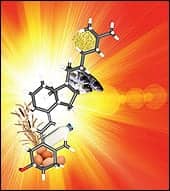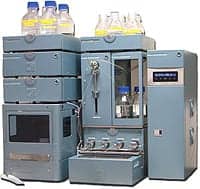Testing is on the rise as deficiency is associated with cancer, stroke, osteoporosis, and cardiovascular and autoimmune disorders.

Staying indoors out of the sun may significantly decrease the incidence of skin cancer, but researchers are now discovering that lack of sun may contribute to a disturbing trend—vitamin D deficiency, particularly in children. Headlines across the nation are declaring that vitamin D deficiency is much more common across populations than previously suspected. Medical journals are touting the many ways vitamin D is beneficial to health and declaring that a lack of the vitamin can lead to serious health problems.
According to the National Center for Health Statistics, as many as 36% of Americans are low in vitamin D levels, with 40% of infants and toddlers testing below the optimal blood threshold level.
Translated, this statistic indicates that at least one in five American children between the ages of 1 and 11 are at risk for a variety of health issues, including nutritional rickets, because they are not getting a sufficient amount of vitamin D.
This deficiency is viewed with increased concern by many health care professionals because the most recent research findings on vitamin D—specifically, vitamin D3—are claiming that vitamin D is a hormone, not just a vitamin that promotes good bone health. In their paper, “Does Vitamin D Make the World Go Round,” authors Carol Wagner, MD, Sarah Taylor, MD, and Bruce Hollis, PhD, from the department of pediatrics at the Medical University of South Carolina, showed that vitamin D is a complex hormone that helps to regulate immune system function.
Not Simply a Vitamin, but a Hormone as Well
The hormone’s receptors are expressed by cells in most organs, including the brain, heart, skin, gonads, prostate gland, and mammary glands. In the digestive tract and parathyroid glands, active vitamin D metabolites are responsible for calcium uptake, while other receptors are also involved in immune regulation and mediate response to infection and inflammatory processes. Additionally, the nutrient is associated with cell proliferation and differentiation.
While still considered vital for absorption of the calcium needed to make strong bones and teeth, vitamin D is thus also integral to other aspects of health. Recent studies indicate that deficient or low levels of vitamin D are associated with a whole spectrum of diseases, including cancer, depression, stroke, chronic pain, osteoporosis, and diabetes, as well as cardiovascular and autoimmune disorders. Studies have also indicated that the hormone could be instrumental in the prevention of infections.
Other research indicates that children lacking sufficient levels of vitamin D have increased levels of blood pressure and cholesterol and have a greater likelihood of being overweight. In addition, new evidence is mounting that getting enough vitamin D may ward off colds, childhood wheezing, and winter-related eczema.
Besides children, other groups at heightened risk for vitamin D deficiency include the home-bound elderly; older individuals, who produce less vitamin D as the skin ages; and darker-skinned individuals, whose skin melanin protects them from UV radiation but increases the exposure time required for photoactivation of pre-vitamin D in the skin.

Symbiosis autosampler from Spark Holland
As more and more published studies indicate there may be a link between low levels of vitamin D and various disease states, there has been an exponential growth in physician orders for vitamin D tests. At any given time there are more than 1,000 research studies worldwide attempting to define the link between vitamin D deficiency and various disease states.
According to Carroll Streetman, president of DiaSorin Inc, Stillwater, Minn, spending less time outdoors and more time behind computer screens has led researchers to estimate that vitamin D insufficiency and deficiency affects more than 70% of the United States population.
“We tend to spend less time outdoors and more time behind our computer screens,” Streetman says. “Since vitamin D results from a conversion in the skin after exposure to sunlight, any reduction in exposure to the sun results in lower blood levels of circulating vitamin D.”
Streetman maintains that the apparent increase in deficiency is primarily due to the increase in testing—a result in part due to increased consumer awareness and interest in healthy lifestyles, and to the increased physician demand.
The 25-Hydroxy (OH) Blood Test
Vitamin D deficiency can be diagnosed with a simple blood test, the 25-hydroxy (OH) vitamin D test, which measures the serum concentration of 25(OH)D—the accepted indicator of vitamin D status. Biologically inert, vitamin D requires two successive hydroxylation reactions for activation. The first occurs in the liver to form 25(OH)D, and the second occurs in the kidney to form the physiologically active dihydroxyvitamin D. There are two forms of vitamin D that contribute to the overall levels—one derived from vitamin D produced in the skin, and one derived from diet or supplementation. Some studies have raised questions about the ability of many existing assays to accurately measure the different forms of 25(OH)D, and, thus, of the total vitamin D value.
According to Streetman, the LIAISON® 25 OH Vitamin D TOTAL assay by DiaSorin—the first manufacturer to develop the vitamin D assay and with more than 2 decades of experience—is the worldwide market leader in vitamin D testing. The assay has been used in the vast majority of clinical studies worldwide—including the National Health and Nutrition Examination survey (NHANES III), the Women’s Health Initiative (WHI), the Nurses’ Health Study (NHS), and the Health Professionals’ Follow-up Study (HPFS) by Harvard—to define normal circulating 25(OH)D levels.
Cleared by the FDA, the LIAISON 25 OH Vitamin D TOTAL assay is the only fully automated, chemiluminescent, antibody-based 25 OH vitamin D assay on the market. It measures both 25 OH vitamin D2 and 25 OH vitamin D3, providing a TOTAL 25 OH vitamin D result that the clinician can use to accurately determine whether his patient’s vitamin D level is sufficient, insufficient, or deficient. With a throughput of 100 tests per hour and a time to first result of 35 minutes, the DiaSorin LIAISON 25 OH Vitamin D TOTAL assay achieves high throughput and rapid turnaround times.
According to Streetman, the assay runs on the fully automated, random-access LIAISON system, which allows for long walkaway times and saves on labor when compared to the semiautomated, labor-intensive liquid chromatography-mass spectrometry method, the manual radioimmunoassay, or the enzyme-linked immunosorbent assay methodologies.
The test is moderately complex, so most lab personnel can operate the system, unlike some of the 25 OH vitamin D assay system alternatives that require a more highly paid technical-level operator and/or labor-intensive activities.
“The assay also provides cost savings,” Streetman says. “The test kit provides more test results per kit than some alternative methodologies because the laboratory staff is able to run it in single, rather than duplicate.”
Streetman adds that the assay has become the largest-volume send-out test for most laboratories, and, as a result, many are now choosing to bring the test in-house because using reference labs can strain send-out budgets.
“In bringing this high-volume test in-house, one of the primary challenges labs face is in identifying a cost-effective, rapid testing methodology that allows accurate results and quick turnaround times for their clinicians,” Streetman says. “As a part of this selection process, the lab must also consider a testing methodology that meets their immediate demands, as well as future vitamin D testing demand, which has consistently grown 80 to 90 percent year over year for the past 3 years.
“Another challenge labs face is the lack of a universally accepted international standard preparation for the 25 OH vitamin D assay,” Streetman continues. “Many labs are signing up for external quality assurance schemes such as DEQAS (the international vitamin D Quality Assessment Scheme) as a means to address quality assurance for results.”
As an FDA-cleared product, the assay is subject to rigorous quality-control measures to ensure lot-to-lot consistency before release.
“DiaSorin is committed to product quality and assurance to the lab community that results are reliable and consistent,” Streetman says. “For laboratories performing non-FDA-cleared lab-developed tests for 25 OH vitamin D, lot-to-lot quality control is less regulated, leaving a higher risk for result variability in results.”
The product is used in hospitals and in national and regional reference labs, as well as in many physician’s office laboratories.
Liquid Chromatography and Mass Spec
ESA Laboratory, a Dionex company, Chelmsford, Mass, offers the FDA-cleared vitamin D high performance liquid chromatography test (HPLC), claiming that the assay offers specific and accurate measurement of vitamin D sufficiency, is cost-effective and easy to implement, and eliminates the need for home-brew assays and concerns over antibody or protein-binding issues.
The product detects each form of vitamin D individually and automatically reports total 25(OH)D to allow accurate assessment of vitamin D. Quick, easy, and reliable, the test offers prepackaged reagents and a simple, solid-phase extraction. Electrochemical detection greatly reduces the sample-volume requirement and complexity over HPLC methods using ultraviolet detection. A single operator can process up to 75 samples per shift.
According to company literature, adding the ESA test could reduce the annual send-out budget by more than $200,000 in a typical lab with a test volume of 500 tests per month and a send-out cost of $35 per test. Installation services and training are provided, as well as quarterly HPLC schools, assay and instrumentation support, preventive-maintenance services, and supplemental assay training for new-hires.
Spark Holland Inc, Brick, NJ, which specializes in autosamplers for teaming with mass spectometry systems, offers a new method for low-level determination of 25-mono-hydroxy-metabolites of vitamin D2 and D3 in plasma. The assay is completely acetonitrile free, avoiding problems associated with the current acetonitrile shortage.
According to Sales and Marketing Manager Sebastiaan Portier, the new assay saves labor and costs because it involves almost no manual handling. In addition, large numbers of samples are often involved, as is significant solvent usage.
Plasma samples are diluted with a newly developed protein-disrupting buffer that contains the internal standard. Samples are then placed in the autosampler for direct injection into the system. A detection limit of 1 ng/mL per compound is achieved with a total run-time of 4 minutes, including online solid phase extraction (SPE). Used in hospital and reference labs, the assay uses the Symbiosis system for HPLC with integrated SPE linked to an Applied Biosystems API 4000 Mass Spectometer.
“This new assay is likely to be of significant benefit,” Portier says. “It is innovative, providing a fast, sensitive, and simple method of testing for vitamin D levels.”

To monitor news in vitamin D testing, search for “vitamin D testing” on this website.
High-resolution SPE cartridges and precise SPE process control enable highly efficient sample preparation and concentration. Combined with direct elution into the mass spectometry systems, high assay performance is achieved, as is maximum assay automation.
As vitamin D continues to dominate the headlines and research continues into its importance to health, it may just become the new “super nutrient,” and labs will need to step up their testing capabilities.
Shannon Rose is a freelance health and medical writer based in Temecula, Calif.




